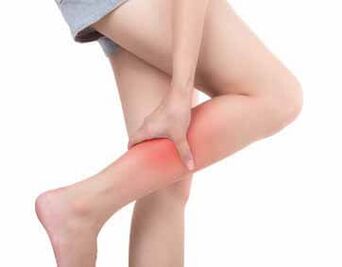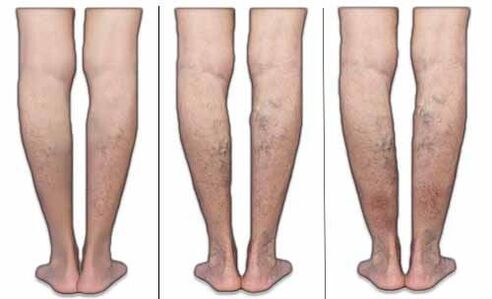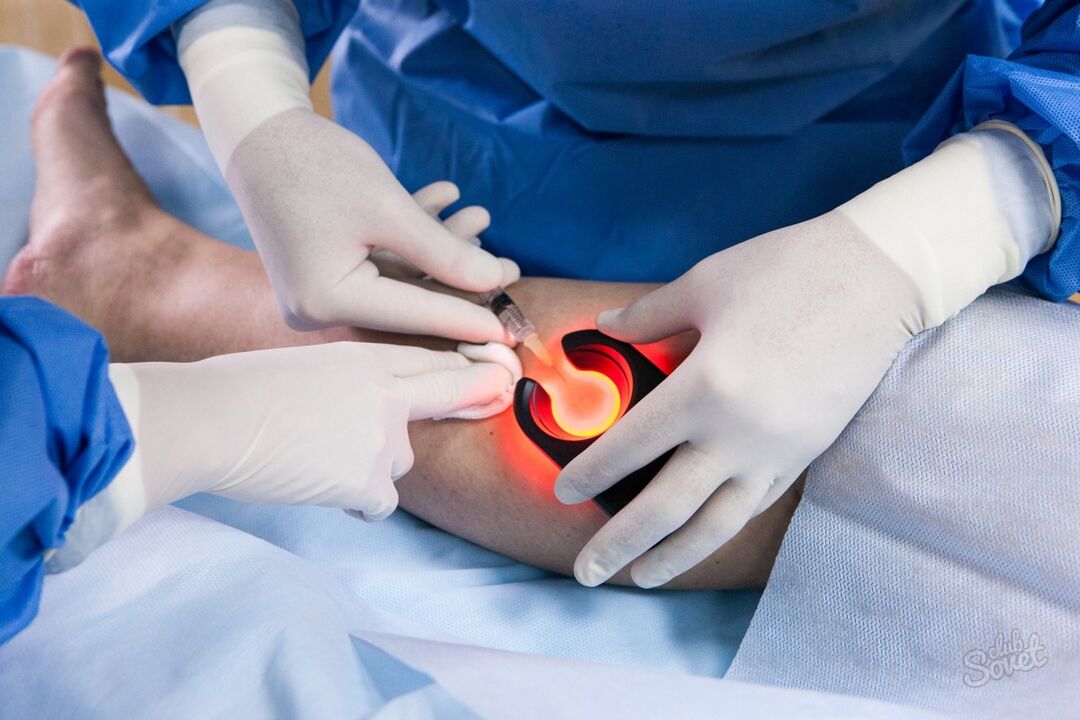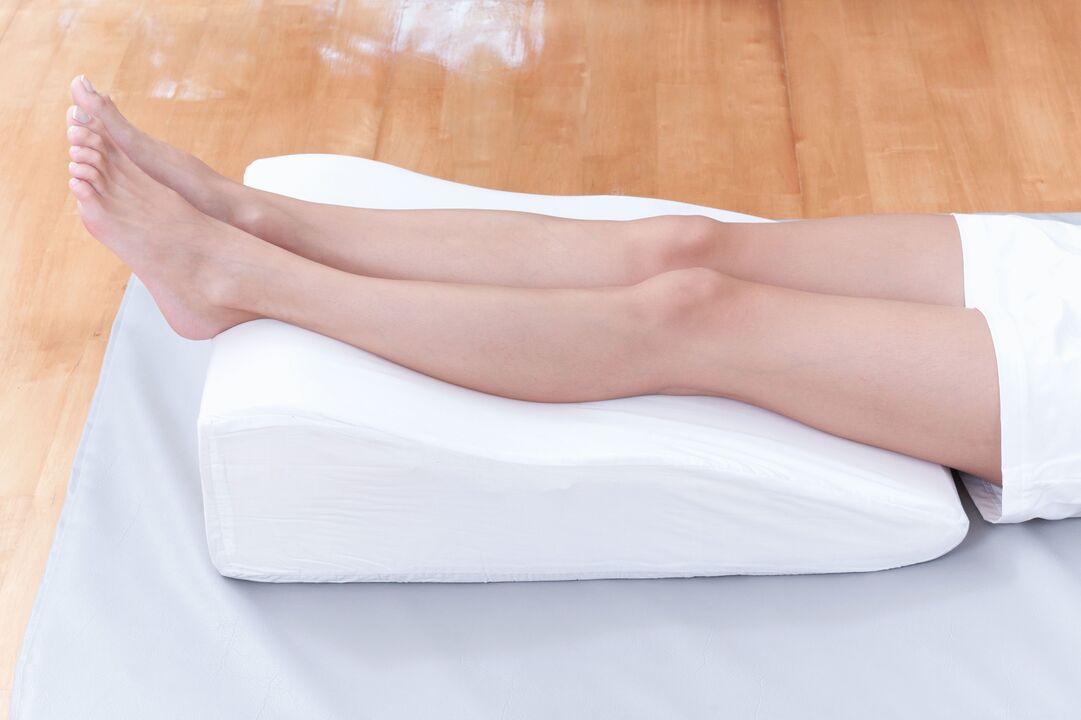Variables are systemic diseases that can affect blood vessels in any part of the body. Its essence is valve dysfunction that controls the direction of blood flow. Therefore, under the influence of the wall stretching and losing elasticity, a large amount of fluid accumulates in the veins.

In most cases, medical publications focus on the symptoms and treatment of varicose veins on the legs, as this disease is considered to be the most common: According to statistics, more than 80% of all varicose veins belong to the lower extremities precisely. However, despite this, the diagnosis of varicose veins is surprising for most patients and its detection occurs later. All of this suggests insufficient awareness of the dangers posed by varicose veins.
Characteristics, causes and mechanisms of varicose veins development
The main feature of varicose veins in the legs is its vastness. Changes may be subjected to surface and deep extension of veins over a large length. Since the load on the foot is quite large and long, the valves in the circulation system may start to weaken. Therefore, detection of varicose veins in the legs usually occurs in young people and girls.
The lower limbs are characterized by hidden varicose veins and other phenomena: in the context of obvious venous changes and unpleasant symptoms, there is no obvious sign of this disease. Therefore, in about one-third of the cases, the disease is detected in the late stages.
In order to effectively treat varicose veins in the legs, doctors must find out why it occurs. Since free radical methods are used in 80% of patients, special attention will be paid to the recurrence of varicose veins to reduce the impact of factors that cause varicose veins. These include:
- Hereditary tendency is actually an uncontrollable factor, and nonetheless, it can be limited by standard precautions.
- Body Effects - Increase the burden on the legs (long-term standing, sitting, habit of crossing the legs, excessive weight, lifting weight);
- Physiological effects - hormone changes and taking hormone medications (usually usually contraceptives), metabolic diseases, lack of physical exercise;
- The pathological causes are the lower limbs, tumor soft tissues of the liver, kidneys, kidneys, injuries and systemic tug of war, squeezing the veins in the abdominal cavity.
Depending on the location of the veins, doctors distinguish several types of varicose veins on the legs:
- surface. It is expressed by the appearance of a blue or red varicose veins grid on the legs, which first resemble a network and then a plexus of rather thick winding wires.
- Deep. It is expressed through failures that are invisible during external examination of the vascular plexus. Vein pain in the lower limbs is more intense as this type of varicose veins expands and the risk of complications is higher.
- When the deep and superficial veins change, they are combined together.
The cause of varicose veins and their elimination are closely related. First, it is important to exclude factors that have the greatest negative impact on venous status.
When diagnosing venous changes, it is important to distinguish them from other diseases. For example, varicose veins under the knee look the same as Becker cysts and have similar symptoms.

stage
When the function of the venous valve is less than 50%, the first sign of varicose veins in the legs occurs in the gradual stage. In the first or zero stage of varicose veins, known as the "compensation stage", there is no discomfort and no visible changes. The initial stage of varicose veins in the legs is examined by a careful examination of the hemorrologist's limbs.
In the second phase of varicose veins (called "subcompensation"" these changes are well expressed:
- The outlines of large veins are visible under the skin, but they may not highlight the skin surface.
- On the skin surfaces under the hips and knees, the pattern of the fine vein grids of blue or red capillaries is clearly visible.
- By night, my legs became swollen.
- At night, the calf muscles are in a tight situation.
This stage of varicose veins in the lower limbs is distinguished by the increase in symptoms, which will weaken.
In the final stage of varicose veins, compensatory nature occurs: the body cannot replenish tissue needs in oxygen, while the valves in the veins lose 90% of their function. The condition of the limbs worsened due to insufficient blood supply. This stage of varicose veins is characterized by a reduced regeneration ability of tissue capacity. Rich complications worsen the overall condition of the patient. Symptoms remain in the final stage of varicose veins.
symptom
The most common and early symptoms of varicose veins are leg pain at the end of the workday. It shows changes in deep and surface containers and is a signal of insufficient blood supply to soft tissues. In some cases, pain is the only symptom of deep veins in the lower limbs. As surface blood vessels change, the appearance of varicose veins on the legs usually only causes aesthetic inconvenience, indicating the development of the disease.
The nature of pain with varicose veins may vary at different stages of disease development:
- In the initial stage, some discomforts are similar to ordinary fatigue.
- As the second stage develops, the legs of the leg veins appear burning, and varicose veins are usually located under the knee.
- Varicocele veins in the lower limbs are accompanied by stages 2 and 3 of the disease, followed by cramps in the calf muscles.
- Acute pain that causes chromium occurs in the final stages of the disease.
In addition to obvious physical discomfort, the disease is accompanied by external changes. Most patients complain about scratching their legs – varicose veins, which is considered a normal phenomenon, suggesting the ischemia process. The thin varicose veins mesh does not actually bother in the first stage, and over time it protrudes stronger and becomes an interweaving of thickened containers. Any physical exercise, including coughing, sneezing, or long walks, can lead to enlarged capillaries and sometimes even veins. Blood pours under the skin, forming a hematoma.
The presence of bruises on the teeth of the legs indicates stable progression of the disease, excessive vein stretching and sparseness.
The presence of varicose veins on the legs, peeling of the skin, thinning and the appearance of erythema in the injured legs suggests that the atrophy process is characterized by the final stage of the disease. Complications are caused by redness in the lower leg, accompanied by acute pain and laxatives. Such symptoms are characterized by phlebitis and thrombosis. If the patient is blackened by the legs, it indicates severe vein blockage and the onset of the necrosis process.

diagnosis
Diagnosis of varicose veins on the legs is easy to diagnose because the container does not always surface. To confirm the diagnosis, a doctor must perform external examinations and conduct many tool studies:
- Double-stranded scan or ultrasound on the lower limb - For varicose veins, it is first used to determine the extent of blood vessel wall stretching, where blood flow properties are found and blood clots are detected;
- Radiography with contrasting limbs - functional examination criteria for varicose veins in the lower limbs, which allows you to determine the patency of blood vessels;
- MRI is the gold standard for modern diagnosis of varicose veins in the lower extremity, which enables you to evaluate the function of venous valves, identify the focus of ischemic foci in soft tissues, detect blood clots and other pathological changes that are caused in the context of varicose veins.
To shed light on the completeness of the disease, laboratory studies were prescribed: evaluating thrombosis risk, general and biochemical blood tests of coagulation maps.
Characteristics of treatment
Treatment of varicose veins on the legs is related to a bleeder. After determining the extent of pathological changes, the doctor chose the most effective treatment. Unfortunately, because the disease is systematic, even modern treatments do not have long-term but not 100% stable results.
According to statistics, even if the free radical method of 80% of patients was used to treat varicose veins in the lower limbs, relapse occurred for 5 years.
In the initial stages of leg varicose veins, it is best to be conservative. Its basis is the use of topical and systemic drugs:
- Anticoagulants that reduce blood viscosity and improve tissue nutrition;
- A shocker who reduces the risk of thrombosis and improves tissue nutrition;
- Varicocele to prevent further stretching of the vein, reduce the inflammatory process and swelling.
The obvious discomfort of varicose veins in the legs was prescribed. The preparation of this group helps to relieve pain and prevent the development of complications.
What if itch doesn’t allow sleep, do familiar things and make you nervous? It's worth trying a cream or gel that has a cooling effect. They don't affect the veins and will not help deal with the disease, but they will quickly relieve symptoms.
In addition to conservative treatments, doctors often use complex treatments for varicose veins in the lower limbs, when using minimally invasive and surgical procedures at the same time and with medical effects. This protocol is used for strong symptoms and widespread transmission of venous networks. The bleeding expert decides what to do if the varicose veins in the leg start to develop suddenly. At the same time, it considers all aspects of disease development, individual characteristics of the body, and health issues, which may become contraindications for certain procedures.
What method is used to eliminate pathological blood vessels:
- Laser coagulation. If the varicose veins are not switched to stages 2 and 3, use it, that is, in the presence of small "stars" on the skin surface. This method is painless and effective, but expensive. Since visible blood vessels are eliminated, the cause of the disease is preserved, there is no guarantee of 100% cure. Applied in early stages to eliminate beauty defects.
- Sclerotherapy. In thin and medium thicknesses, blood vessels are introduced by a sclerosive agent that seals the cavity of the vein and removes it from the blood flow system. The program is actually painless and relatively cheap, but has many contraindications. It is in 1. 2 and sometimes uses 3 stages.
- Ovalectomy is a classic resection of a pathological vein that is pierced or cut by a skin. This method eliminates surface varicose veins on the hips and calf. After the surgery, visible scars remained, but the surgery was the only effective scar with advanced varicose veins.
Performing surgery or minimally invasive intervention does not mean getting rid of varicose veins completely. The patient will have to see a bleeder regularly, take medications to maintain venous tension and wear down the compressed flax.

Contraindications
Experts attribute the contraindications to varicose veins in the legs, any movement that may cause additional stagnation in the blood vessels of the lower limbs. These include:
- Long-term static posture;
- weightlifting;
- Sit with bent or crossed legs.
In addition, patients should avoid taking alcohol, which helps increase blood viscosity and weaken the walls of blood vessels. Smoking can negatively affect the course of the disease. Therefore, after diagnosis, it is necessary to give up bad habits.
complication
The thrombosis and inflammation processes of the venous wall mentioned earlier are far from being super-leg varicose veins that are dangerous to patients in terms of complications. Due to circulatory diseases, not only the blood vessels but also the soft tissues, problems with muscles and skin are mentioned in the consequences of varicose veins on the legs:
- Dermatitis, accompanied by rash, skin ulcers, and itching;
- Eczema, accompanied by skin rupture;
- Necrotic changes in the skin until gangrene form;
- Nutritional ulcers;
- Muscle atrophy.
Usually, as the disease progresses and excessive stretching of the blood vessel walls, the patient may bleeding from varicose veins in the lower limbs. When blood accumulates under muscles and skin and forms a hematoma or opens, it can be like it is closed. The second option is the arrival of large amounts of blood and coma, especially when the patient takes anti-drugs and anticoagulants.
This complication of varicose veins in the lower limbs can not only cause injuries, but also lead to a little effort, such as coughing or rapid exercise.
The most dangerous complications of lower limb varicose veins are pulmonary artery thromboembolism and myocardial infarction. They occur due to blood clot breakdown in the femoral artery and migrate according to the blood flow system in the coronary artery and pulmonary blood vessels. The mortality rate during this process is extremely high, so it is important for patients to always follow the wellbore and see a doctor urgently for dyspnea and blunt chest pain.


















